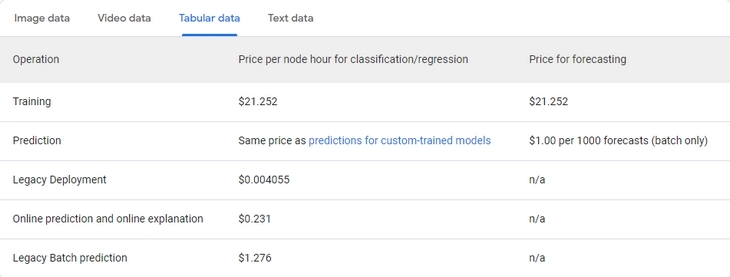Vertex AI: A New Tool From Google Predicts Customer Demand
If there’s only one problem – it’s not easy to connect to the tool yet. Here’s everything that you should know about Vertex AI, and how to get started with this Artificial intelligence tool know customer demands and make your business better.
Artificial intelligence will finally bring tangible benefits to businesses of all sizes. At least that’s what the announcement of Google’s new tool suggests, but… in reality, it’s more complicated than that.
Artificial intelligence for retail
Forecast technology is based on the already running Vertex AI machine learning platform, launched in May 2021. It incorporates all of Google’s then-available cloud-based tools for building data sets and machine learning models.
According to the creators of the system, any processes from the Machine Learning field can be transferred to the platform, and developers will find support at all stages of working with algorithms.

Vertex AI Forecast is a tool for companies in the retail and logistics industry. According to Retail Systems Research, retailers are losing more than a trillion dollars a year due to improper inventory management. Another study by McKinsey & Co. shows that increasing the accuracy of demand forecasting by 10-20% can reduce those losses by 5% and increase revenue by 2-3% (which in absolute terms can be a very impressive amount).
With Vertex AI Forecast you can build sales forecasts based on existing sales, demand metrics, product and service requests, and build inventory based on these forecasts.
Vertex AI Forecast processes data sets of up to 100 million lines from BigQuery or CSV files. Information on thousands of product lines can be used, taking into account hundreds of demand parameters, not only simple ones like colour or brand but also complex ones like advertising activity, online purchases and historical trends. Users will be able to make forecasts at the level of retail chains or individual shops, taking into account the budget and time period of expected sales.
The developers call the advantages of the system the absence of the need to manually set up a machine learning model, as well as the short training time. In just two hours, any team can train Vertex AI Forecast to create high accuracy forecasts. Comparative tests based on Kaggle datasets have shown high accuracy of the new AI (error rate within 3%, which is certainly not bad).
Practical aspects of Vertex AI Forecast
To use the new system, you have to access the Google Cloud, which hosts all of the company’s cloud-based developer tools. Access is by request, and this, in turn, requires confirmation of your address and phone number:

Lately, SMS delivery from abroad is lagging and is more or less fast only at night, so confirmation of the request may come hours after sending (if at all), you should be prepared for this.
The Vertex AI toolkit can already be used in most countries. The system is not free and you will have to build a budget to use it, but a trial period ($300 for 90 days) will be available upon registration for trial use. After that the price of use will depend on the amount of machine learning, it is regulated by the price list.

As for Forecasting, Google’s official page takes you to connect to the main part of the Vertex AI platform. You can indicate that you are from Russia, which means that, logically, this product should be available in our country too. There is no official confirmation of this yet. We were not able to connect to the system – SMS messages to confirm the phone number was not delivered. It is possible that other companies will face the same problem.

We can assume that the system will be available first to the major players in the market, who will be pioneers in “battle” testing. In overseas markets, Vertex AI Forecast is already in use by several companies that have seen improvements in some of their retail business metrics.
Among those users is Lowe’s, which owns a chain of home improvement retailers. The company says it has been able to create accurate demand models at the item level as well as at the shop level. These models take into account current inventories, regional trade data, promotions and a host of other signals to make extremely accurate forecasts for the future.